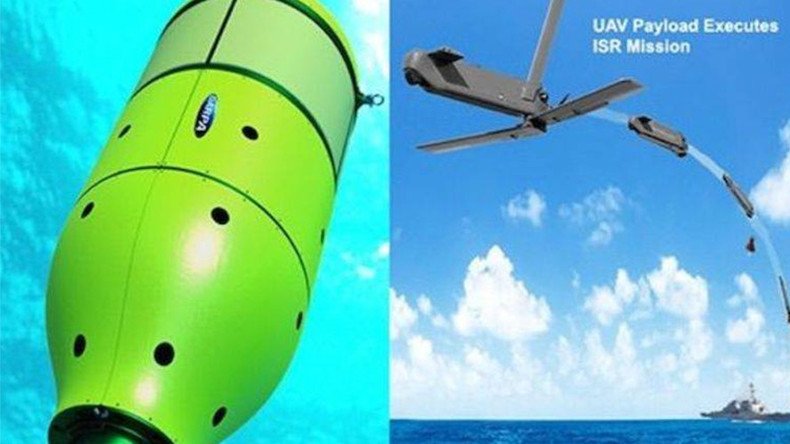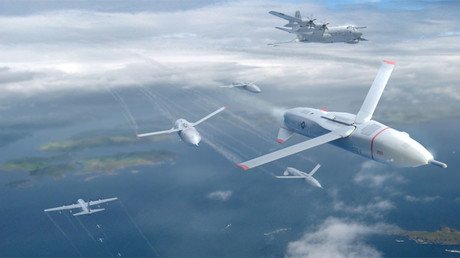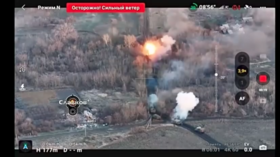DARPA tests drone-launching pods that hide in ocean (VIDEO)

The US military tech development agency is testing a special ‘pod’ drone delivery system that can hide in the ocean until remotely triggered to launch a drone.
The Defense Advanced Research Projects Agency’s (DARPA) ‘upward falling’ payload (UFP) is designed to lie in wait on the ocean floor until a threat arises.
A “wake up” signal sent remotely by US military personnel triggers the pod to rise to the surface, where it releases an Unmanned Aerial Vehicle (UAV) into the sky.
High-tech pods concealed in ocean unleash military UAVs #FoxNews#Navy#military#DARPAhttps://t.co/YyQPWRCPwWpic.twitter.com/JI7vjEjeHI
— Allison Barrie (@allison_barrie) May 13, 2016
“People thought this was an impossible, moonshot reach, and yet again DARPA has managed to achieve it,” Allison Barrie, who got a sneak peak of the device, told Fox News.
“You can activate this pod from anywhere in the world. … It’s come so far in such a short period of time.”
The pods are now undergoing sea demonstrations as part of their Phase 3 testing.
The pods are designed to lie “dormant and undetected”, withstanding immense pressure and unpredictable ocean conditions for extended periods of time. The pods could then kick into action after years in hibernation underwater.
“Getting close to objects without warning, and instantiating distributed systems without delay, are key attributes of UFP capability,” said DARPA program manager Jeffrey Krolik.
“To succeed, the UFP program must be able to demonstrate a system that can: (a) survive for years under extreme pressure, (b) be triggered reliably from standoff commands, and (c) rapidly rise through a water column and deploy its payload.”
DARPA says that given US Navy operational - and budgetary - limitations, the drone pods have the potential to fill gaps in naval support across wider areas of the world’s oceans.
Announcing the phase one element of the project in 2014, program manager Andy Coon said the development offers “low-cost alternatives to traditional approaches” that can “scale well to open-ocean areas”.
“As long as you can command the nodes remotely and quickly, and don’t have to send a ship out to launch it, you’re in good shape,” he added.
READ MORE: US prepares to hunt enemy submarines with giant sea drone (VIDEO)













